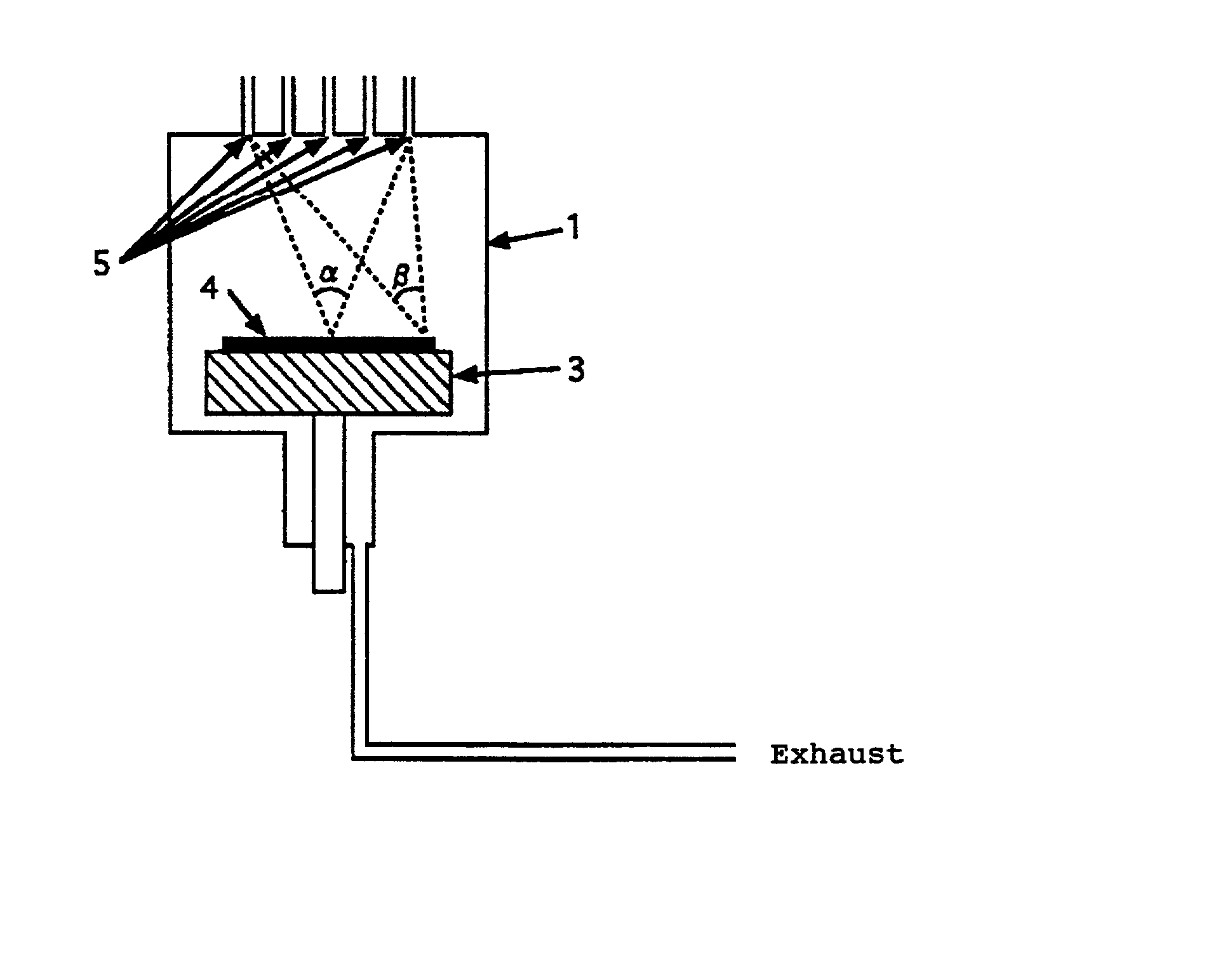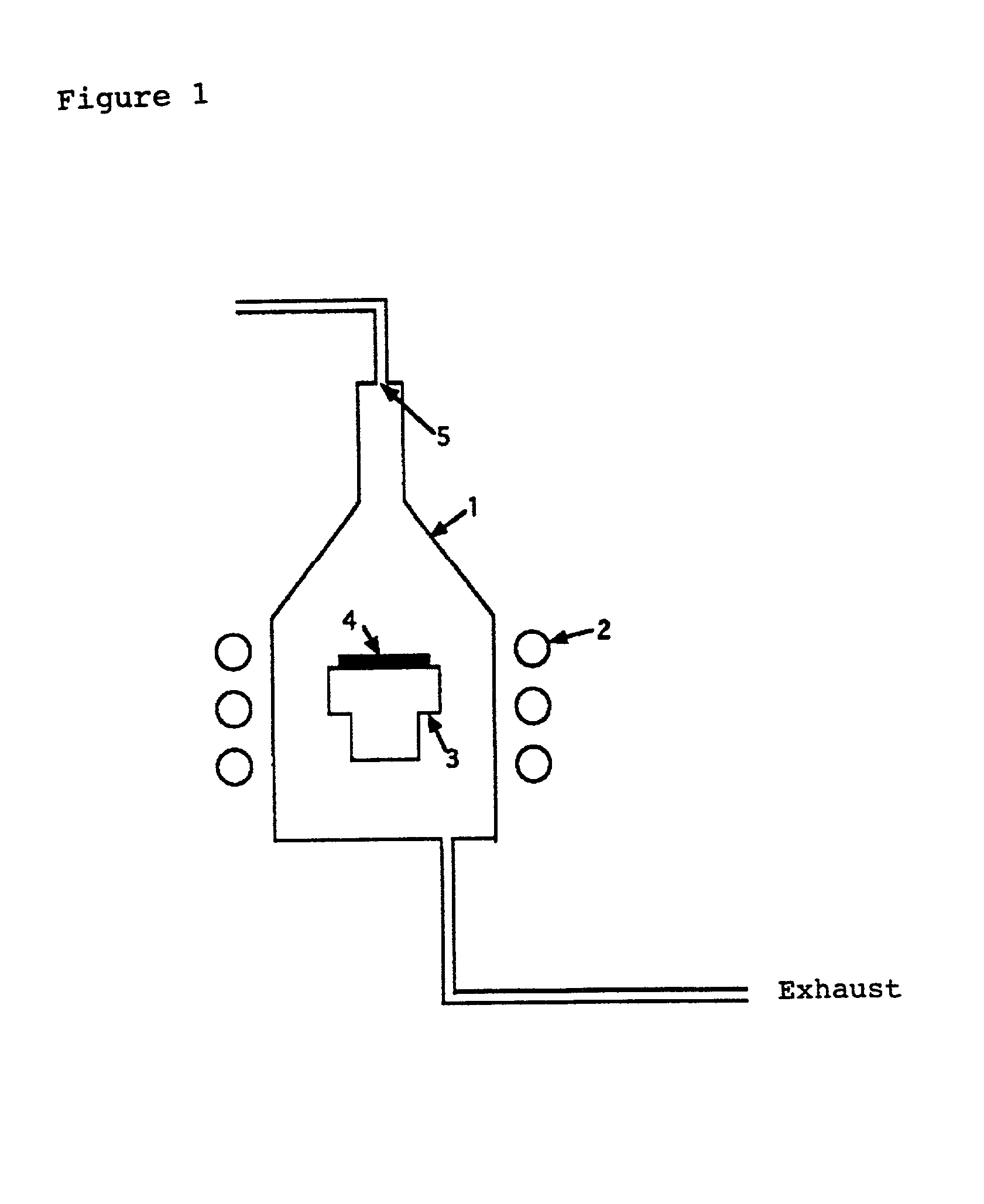Method of manufacturing group iii-v compound semiconductor
- Summary
- Abstract
- Description
- Claims
- Application Information
AI Technical Summary
Problems solved by technology
Method used
Image
Examples
first example to
Compare
[0048] A sample was manufactured in the same manner as in the first embodiment, except for points that hydrogen gas was used as the carrier gas through the entire steps and that the supply of NH.sub.3 was stopped when the temperature of the susceptor was reduced to 600.degree. C.. Despite the effort to evaluate the sample in the same manner as in the first embodiment, it was impossible to evaluate the conductivity because of a high resistance.
second example to
Compare
[0049] A laminated structure consisting of non-doped GaN and Mg-doped GaN was manufactured in the same manner as in the first embodiment, except for points that hydrogen was added 50 SCCM during cooling down of crystal after growing the crystal. Carrier concentration of the sample was 3.times.10.sup.14 cm.sup.-3 when evaluated in the same manner as in the first embodiment.
second embodiment
[0050] After growing non-doped GaN to a thickness of 3 .mu.m using hydrogen as the carrier gas, supply of TMG was stopped, the carrier gas was changed to nitrogen, and the substrate was cooled down to a temperature of 800.degree. C., as in the first embodiment. Next, using TEG, TMI and TEA as materials, In.sub.0.l5Ga.sub.0.85N was grown to a thickness of 50.ANG. and Ga.sub.O.8Al.sub.0.2N was grown to a thickness of 300.ANG.. Further, the temperature of the substrate was increased to 1,100.degree. C. while supplying only nitrogen, i.e., the carrier gas, and ammonia, so as to grow Mg-doped GaN to a thickness of 5,OOO.ANG., in the same manner as in the first embodiment. After growing Mg-doped GaN, the substrate was cooled down and taken out as in the first embodiment except for the point that the supply of NH.sub.3 was stopped when the temperature of the susceptor was reduced to 600.degree. C., and the carrier concentration was measured. Measurement showed that the conductivity was p-t...
PUM
 Login to View More
Login to View More Abstract
Description
Claims
Application Information
 Login to View More
Login to View More - R&D Engineer
- R&D Manager
- IP Professional
- Industry Leading Data Capabilities
- Powerful AI technology
- Patent DNA Extraction
Browse by: Latest US Patents, China's latest patents, Technical Efficacy Thesaurus, Application Domain, Technology Topic, Popular Technical Reports.
© 2024 PatSnap. All rights reserved.Legal|Privacy policy|Modern Slavery Act Transparency Statement|Sitemap|About US| Contact US: help@patsnap.com










